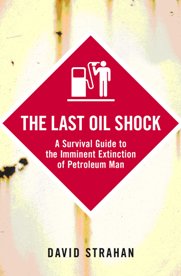So while I accept the USGS reserve growth forecast is on track for the time being, the risk is that this will also prove overoptimistic. This means that both the deflated discovery figure and the reserves growth estimate should be regarded upper limits, and therefore that a conventional liquids ultimate of 2830 billion barrels is about tops.
The recalibrated USGS numbers suggest a peak by 2017-21, but their resource assessment only covers conventional liquids. Some apparently faith-based forecasters argue, perhaps with echoes of Vincent McKelvey, that unconventional fuels will put off the witching hour for decades to come. But this is to confuse the undoubtedly vast scale of unconventional resources for the speed with which they can be produced. As I show in The Last Oil Shock, of the varieties that are currently practical – Canadian and Venezuelan bitumen, gas-to-liquids, compressed natural gas and biofuels – none is likely to grow quickly enough to fill the hole left by crude. They may defer the overall liquids peak by a few years, but it is conventional oil, which still makes up the overwhelming bulk of the oil supply, that will largely determine the date.
When I interviewed Tom Ahlbrandt, project chief for the USGS World Petroleum Assessment, in early 2005, he professed amazement at the furore that his study had provoked among peak forecasters. “I don’t know why they’re wrestling with us”, he said, “We did the numbers straight up, it was scientifically based, and the numbers we have should cause concern in the first half of this century”. He was more right than perhaps he knew. The re-evaluated USGS numbers now provide powerful corroboration for those who forecast a global oil peak by around the end of the next decade. © David Strahan
Further reading
USGS, World Petroleum Assessment 2000-Description and Results, USGS Digital Data Series DDS-60 (CD-ROM)
2 T.R. Klett, Donlad L. Gautier, and Thomas S. Ahlbrandt, An evaluation of the U.S. Geological Survey World Petroleum Assessment 2000, AAPG Bulletin, v. 89, No. 8 (August 2005), pp 1033-1042
3 Harry Longwell, The future of the oil and gas industry: past approaches, new challenges,
World Energy Vol. 5 No. 3 2002

About the author
David Strahan is an award winning investigative journalist and documentary film maker who worked for the BBC for a decade before leaving to write The Last Oil Shock: A Survival Guide to the Imminent Extinction of Petroleum Man, published by John Murray Ltd, 5 April 2007.
www.lastoilshock.com .